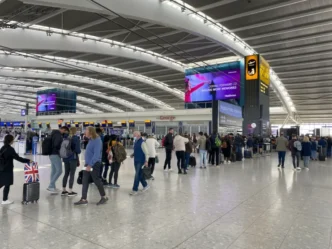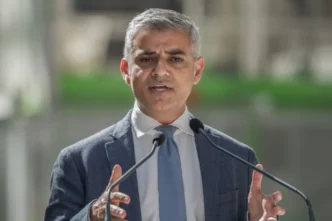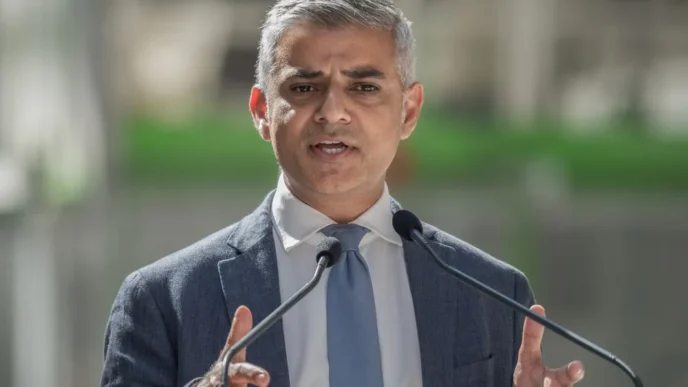Eastern Europe faced one of its most volatile nights in recent months as Russia launched hundreds of drones and missiles across Ukraine, prompting Poland to temporarily shut multiple airports, redirect air traffic, and activate emergency defence protocols. The scale and intensity of the attack marked a new phase in Russia’s air campaign, raising fears of accidental spillover into NATO territory and triggering renewed calls for enhanced European air defence coordination.
For Poland—a frontline NATO state and one of Kyiv’s key military backers—the risk was not theoretical. In both 2022 and 2023, stray missiles crossed into Polish territory, causing the deaths of civilians and sending shockwaves through the alliance. This time, Warsaw acted swiftly.
Russia’s Largest Drone Wave in Months
Ukrainian officials reported that Russia launched one of the biggest drone swarms of the war, with over 150–200 Shahed-type drones, combined with cruise missiles and ballistic strikes targeting:
- Kyiv
- Odesa
- Kharkiv
- Dnipro
- Lviv region, just 70 km from the Polish border
The attack focused heavily on energy infrastructure, logistical hubs, and industrial facilities—part of Moscow’s winter strategy to degrade Ukraine’s grid and strain air defence resources.
Ukrainian Air Force spokespersons described the attack as:
“A deliberate saturation strike designed to overwhelm our air defence systems.”
Explosions and air raid sirens echoed across multiple regions as Ukraine’s defenders worked through the night to neutralize incoming threats.
Why Poland Shut Down Airports: NATO’s Red Line Concern
As Russian drones and missiles approached Ukraine’s western regions—specifically Lviv oblast—Poland ordered temporary closures of key airports, including:
- Rzeszów–Jasionka Airport (the main logistical hub for Western military aid to Ukraine)
- Lublin Airport
- Warsaw’s Modlin Airport (temporarily placed on heightened alert)
Flight paths were rerouted, and several aircraft were instructed to circle or divert until the situation stabilized. NOTAM (Notice to Air Missions) advisories were issued within minutes.
Reason for the shutdown:
- The risk of stray drones or missile debris crossing into Polish airspace
- Uncertain flight trajectories close to NATO borders
- Activation of Poland’s Integrated Air and Missile Defense System
- Coordination with US, British, and German air defence units stationed in Poland
Warsaw’s Ministry of Defence described the measure as “precautionary, based on real-time airspace threat assessment.”
Polish and NATO Air Defences on High Alert
As the drone wave intensified, Poland deployed:
- F-16 fighter jets
- Air defence batteries (Patriot, NASAMS)
- Radar and AWACS surveillance systems
NATO aircraft from Germany and the Baltic region also monitored the situation.
Key concerns for NATO:
- A drone or missile unintentionally crossing the Polish border
- Active interception requiring engagement over NATO territory
- A repeat of previous incidents where unidentified objects landed in Poland
Each of these scenarios carries Article 5 implications, making airspace integrity a top-tier priority.
Growing Fears of Spillover and Escalation
Russia’s strikes near NATO borders have sparked increasing anxiety.
Recent incidents include:
- November 2022: Missile explosion in Przewodów, Poland, killing two civilians
- March 2024: Russian missile intercepted near the Polish border, triggering alerts in NATO air command
- Multiple 2023–2024 cases of debris falling in Moldova and Romania
While Moscow claims it is not targeting NATO states, the proximity of Russian operations to EU territory has dramatically increased the risk of accidental escalation.
Poland’s shutdown of airports signals how seriously the threat is now taken.
Ukraine’s Response: “Russia Is Testing NATO’s Red Lines”
Ukrainian officials argue that Russia’s attacks near NATO borders are intentional.
Ukraine’s Foreign Minister stated:
“Russia is probing NATO’s reaction. The closer their missiles fly to Poland, the more Moscow feels it can push the boundaries.”
Ukraine’s Air Force noted that the drone trajectories deliberately skirted the Polish border, forcing Kyiv to coordinate closely with Warsaw to avoid uncontrolled cross-border engagements.
Meanwhile, emergency crews across Lviv, Ivano-Frankivsk, and Ternopil responded to multiple impacts and debris-related fires.
European Leaders React: Calls for Unified Air Defence Intensify
European political leaders responded quickly to the events.
Key reactions included:
Poland
Prime Minister and Defence Minister both emphasised that protecting Polish airspace is non-negotiable and that the country will not hesitate to engage unidentified aerial objects.
Germany
Officials reiterated support for the European Sky Shield Initiative (ESSI)—a program designed to create a continent-wide shield against drone and missile threats.
Baltic States
Lithuania, Latvia, and Estonia called for stronger NATO presence along the region’s air corridors.
EU Commission
Brussels urged stronger coordination, warning:
“Europe must be prepared for Russian attacks near or across EU borders. Civil aviation cannot operate normally under such conditions.”
The Broader Implications: Russia’s Winter Strategy and Europe’s Vulnerabilities
Winter has historically been a period when Russia intensifies its aerial campaign against Ukraine.
This serves several strategic goals:
- Crippling Ukraine’s energy grid
- Degrading air defence systems through saturation attacks
- Testing NATO’s reaction near the Polish and Romanian borders
- Creating psychological pressure on civilians and European governments
This latest mass drone attack reinforces that Europe is not merely watching a distant war—it is increasingly exposed to its consequences.
Conclusion: A Dangerous Night That May Define Future Protocols
The temporary shutdown of Polish airports underscores the evolving security landscape in Europe. As Russia continues to escalate drone and missile strikes near NATO borders, European nations will need to:
- Strengthen joint air defence
- Improve cross-border threat communication
- Prepare civilian aviation for rapid emergency shutdowns
- Address the growing risk of accidental conflict spillover
Poland’s swift action likely prevented chaos in its airspace, but it also highlighted a sobering reality:
When Russia attacks Ukraine, the entire region feels the shockwaves — and NATO must remain one step ahead.















